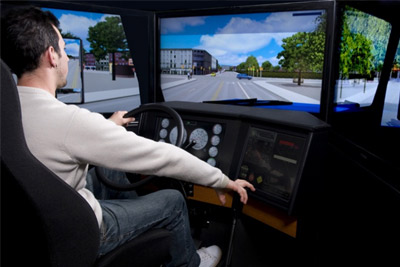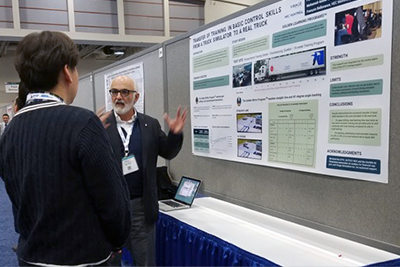Integrating a truck simulator in a driver training program allows trainers to:
- Demonstrate, teach, practice and evaluate every aspect of the in-vehicle training curriculum
- Expose learners to a wide variety of road, weather and traffic conditions and dangerous scenarios in total safety, e.g. a deer crossing the highway
- Adapt training tasks to the each student’s capabilities
- Control the pace of learning by allowing students to practice and improve skills before driving the truck or progressing to the next level of difficulty
- Accelerate learning and reduce the amount of practice needed by providing immediate and focused feedback
- Show instant replays of student performances including overhead views
- Provide students with feedback unavailable in a real truck (e.g. following interval meter, KE meter, camera angles to show blind zones and improve traffic awareness)
- Provide students with reliable, objective performance scores
- Accurately measure progress by comparing individual objective scores with previous scores and group averages
- Identify slower learners in time to help them keep up with the class by assigning extra solo practice drills
- Increase the driving challenge for fast learners by adding distractions – internal ones like arithmetic challenges and external ones like traffic hazards
- Demonstrate the benefits of concepts like defensive or fuel efficient driving
- Improve the risk perception and anticipation skills of their students
- Create positive synergies between classroom instruction, simulator training, in-vehicle instruction, and solo practice
- Improve team work by more effectively coordinating efforts with other trainers
- Raise students’ expectations regarding success, e.g. success will mean more than simply passing the government road test









